Translation State

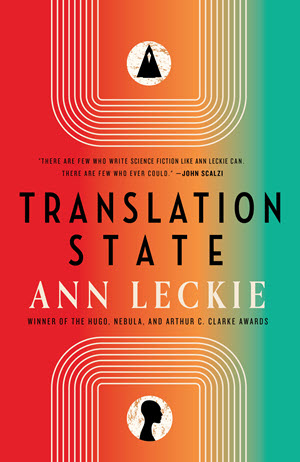 A return to the world of the Imperial Radch has been warmly welcomed by Ann Leckie fans everywhere. Personally I am particularly pleased that the new book, Translation State, focuses on the Presger, who are delightfully alien aliens.
A return to the world of the Imperial Radch has been warmly welcomed by Ann Leckie fans everywhere. Personally I am particularly pleased that the new book, Translation State, focuses on the Presger, who are delightfully alien aliens.
The Presger are so violent and dangerous that direct communication with other intelligent species is beyond them. They don’t believe in talking when they can be eating instead. But, in order to avoid galactic war (which they would probably win, though at great cost), they have created a type of being called a Translator. These are humanoid, made with some human DNA, but evolved from Presger. In Translation State we get to see how Translators are raised and trained. Reader, it is not pretty. Life for young Presger is eat or be eaten.
Why do we get to know this? Well reader, there is a story, stretching back a couple of generations to before the Radchaai civil war. At this time, a Translator in Saeniss Polity, a non-Radchaai territory, escaped Presger supervision and vanished. Up until now, this renegade Translator was merely missing, presumed dead. But now, thanks to the civil war, there is a conclave going on to decide whether AIs such as Breq should be granted recognition as Significant Species and become signatories to the treaty with the Presger. Any small issue might be leveraged for diplomatic benefit, and therefore the Saeniss Office of Diplomacy has to make a show of trying to resolve the open case of the missing Translator.
Not that anyone expects the matter to be resolved, especially after so much time. The job is given to a young person called Enae Athtur, primarily because hir wealthy legal guardian wants sie out of the way. As it turns out, Enae is smart, and has a deep sense of responsibility when it comes to getting the job done. Sie is also very calm in a crisis, especially when faced by unreasonable behavior from powerful individuals, which is just what you need where Radchaai and Presger diplomats are involved.
It turns out (and this is hardly a spoiler as it becomes obvious very quickly) that the missing Translator managed to reproduce itself before dying, and that young being ended up ruling over a small ethnic group called the Hikipi. They have since been conquered by the Phen. The Translator reproduced again. The resulting child escaped the Phenish conquest and ended up being adopted and raised as a member of the Zeosen people. This person, known to us as Reet Hluid, will be our second main character.
Meanwhile among the Presger, a young potential Translator called Qven is on their way to adulthood. Among the Presger, that means merging with an existing adult. Whereas Anaander Miannaai, the Radchaai Emperor, has cloned herself to achieve longer life, the Presger Translators do something similar by merging with juveniles. Translators can thus have multiple bodies, each of which is a different person, but all of which have the same identity and share mental functions. Thanks to a childhood trauma, Qven has a deep-seated horror of merging.
Unfortunately, because of the way that Presger biology works, if a juvenile does not merge, it will die. You can probably see where this is going.
There is, therefore, a whole complicated diplomatic thing going on in which the Presger Translators want everything resolved quietly and conservatively, because if the actual Presger take notice all hell could break lose. Meanwhile the Radchaai don’t want their starships being granted personhood, and every other species is keen to see the Radchaai taken down a peg.
This is not what the book is about. It is just the plot. What the book is actually about is family. Enae has been rejected by hir family, who are deeply horrible people. Reet has loving and supportive foster parents, but he’s not remotely the same species as them. Family as such doesn’t really exist for the Presger, but they raise young all the same and are even more cruel to them than human families. There was a major trap here for Leckie, in that for a long time it seemed possible that the plot would deprive Reet and Qven of any choice as to their futures. I’m pleased to say that she managed to avoid this.
Where Leckie may run into trouble is her portrayal of the Hikipi. There are very few of them left, and many of those that remain are deeply nationalist to the point of enacting terrorist violence. The Phen react to this in a way that would make Cruella Braverman very proud. But the Hikipi don’t come out of this well either. They are caught up in a conspiracy theory which holds that the Presger don’t exist, but have been invented by the Phen as an excuse for colonialist tyranny. The irony being that the Hikipi were actually ruled over by a descendant of a Presger Translator. I think this is supposed to be poking fun at other people prone to conspiracy theories, but the determination of the Hikipi to hold on to their culture is going to cause people from marginalized groups to identify with them, and read into the narrative things that Leckie probably didn’t intend.
Fans of Leckie’s previous work may be disappointed that Breq does not appear in this book. However, there is a supporting cast role for Sphene, the ship that Breq found behind the Ghost Gate in Ancillary Mercy.
There is a fair amount about gender in the book. The Presger Translators do not have gender, but Reet thinks he’s a human male. The Radchaai continue to use she/her pronouns for everyone, whether they are Radchaai or not. This leads to some characters keeping trying to correct them, which is quite amusing.
The other fun part of the book is that Reet is addicted to a video drama called Pirate Exiles of the Death Moons. This seems to be a friendly nod to the Murderbot books. I didn’t get a chance to ask Martha Wells about it when I was in Sweden, but I suspect she’s amused.
I very much enjoyed this book, and the insights it provides to Presger society. I also note that it develops the plot lines left hanging at the end of Ancillary Mercy. Thanks to Reet, Sphene and her cousins may end up being officially recognized as a Significant Species. This would have disastrous consequences for the Imperial Radch, so there must be more stories to be told.

Title: Translation State
By: Ann Leckie
Publisher: Orbit
Purchase links:
Amazon UK
Amazon US
Bookshop.org UK
See here for information about buying books though Salon Futura

 This is the fourth and final book in the Fallow Sisters series by Liz Williams. At one time Williams was muttering about there possibly being five books, but she has managed to wrap the series up in four and I think most fans will be pleased.
This is the fourth and final book in the Fallow Sisters series by Liz Williams. At one time Williams was muttering about there possibly being five books, but she has managed to wrap the series up in four and I think most fans will be pleased.

 I very much enjoyed the first Miles Morales Spider-Man film, and was keen the see the new one in a cinema because I was expecting top notch animation. I was not disappointed. I don’t expect to see a better film this year.
I very much enjoyed the first Miles Morales Spider-Man film, and was keen the see the new one in a cinema because I was expecting top notch animation. I was not disappointed. I don’t expect to see a better film this year.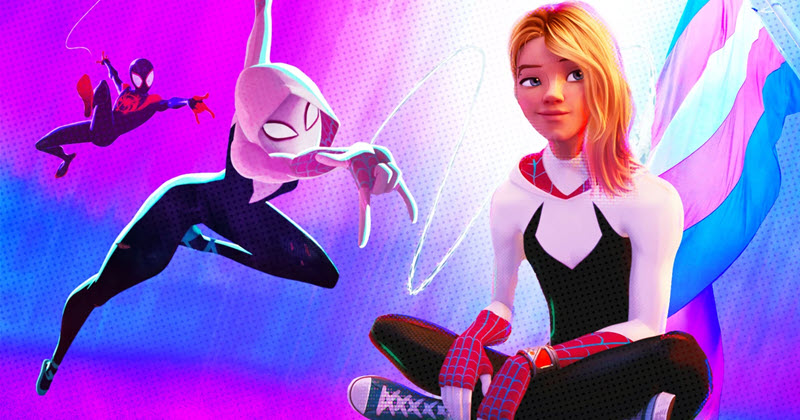

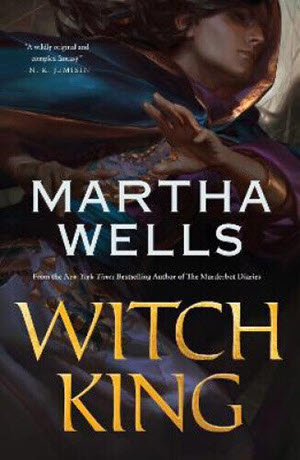 A new novel from Martha Wells is always interesting. A new novel in an entirely new setting is very exciting, because Wells creates such interesting worlds.
A new novel from Martha Wells is always interesting. A new novel in an entirely new setting is very exciting, because Wells creates such interesting worlds.
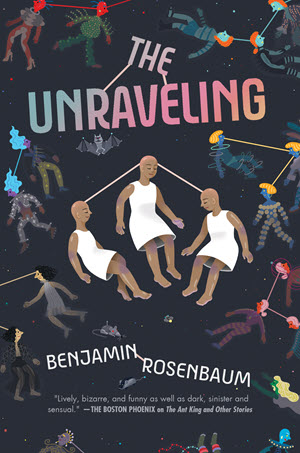 I started this book a while back but put it down because it is rather slow to start. I got back into it because I was on a panel about the future of the family at Eurocon, and this is a book that definitely has thoughts in that direction.
I started this book a while back but put it down because it is rather slow to start. I got back into it because I was on a panel about the future of the family at Eurocon, and this is a book that definitely has thoughts in that direction.

 I can’t believe that I haven’t reviewed this book. I’ve certainly talked about it enough. I’ve even interviewed Nicola Griffith about it for an LGBT+ History Month event. But there’s no actual review. I haven’t had time to re-read the book, but with Menewood due very soon now, here are some thoughts on its precursor.
I can’t believe that I haven’t reviewed this book. I’ve certainly talked about it enough. I’ve even interviewed Nicola Griffith about it for an LGBT+ History Month event. But there’s no actual review. I haven’t had time to re-read the book, but with Menewood due very soon now, here are some thoughts on its precursor.

 This year’s Eurocon took place in Uppsala, a small city in Sweden just north of Stockholm. Arlanda airport is roughly equidistant between the two cities so Uppsala is an easy destination for international travelers. This year there was a problem with the train service between Arlanda and Uppsala, but there is an express bus service that does the job almost as well and is much cheaper.
This year’s Eurocon took place in Uppsala, a small city in Sweden just north of Stockholm. Arlanda airport is roughly equidistant between the two cities so Uppsala is an easy destination for international travelers. This year there was a problem with the train service between Arlanda and Uppsala, but there is an express bus service that does the job almost as well and is much cheaper.
 The Eurocon programming included a number of guided tours of the city and its environs. The one I immediately signed up for was to Gamla Uppsala, the site of the original Viking-era settlement which is about 5 km from the modern city. I’m very glad that I did.
The Eurocon programming included a number of guided tours of the city and its environs. The one I immediately signed up for was to Gamla Uppsala, the site of the original Viking-era settlement which is about 5 km from the modern city. I’m very glad that I did.

 So there I was chatting away with a friend online while watching Glastonbury. We were watching different stages, and I happened to mention that The Pretenders were playing “Hymn to Her”, because how can you not when you have a song like that and are at Glastonbury. Then Katie says, “Have you heard of Heilung?”
So there I was chatting away with a friend online while watching Glastonbury. We were watching different stages, and I happened to mention that The Pretenders were playing “Hymn to Her”, because how can you not when you have a song like that and are at Glastonbury. Then Katie says, “Have you heard of Heilung?”

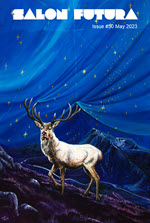 This is the May 2023 issue of Salon Futura. Here are the contents.
This is the May 2023 issue of Salon Futura. Here are the contents. Infinity Gate
Infinity Gate When Women Were Dragons
When Women Were Dragons Hel’s Eight
Hel’s Eight The Terraformers
The Terraformers The Peripheral – Season 1
The Peripheral – Season 1 The Cleaving
The Cleaving Descendant Machine
Descendant Machine HistFest 2023
HistFest 2023 Celtic Wales
Celtic Wales 2023 Tolkien Lecture
2023 Tolkien Lecture Swansea ComicCon 2023
Swansea ComicCon 2023 Willow – the TV Series
Willow – the TV Series Editorial – May 2023
Editorial – May 2023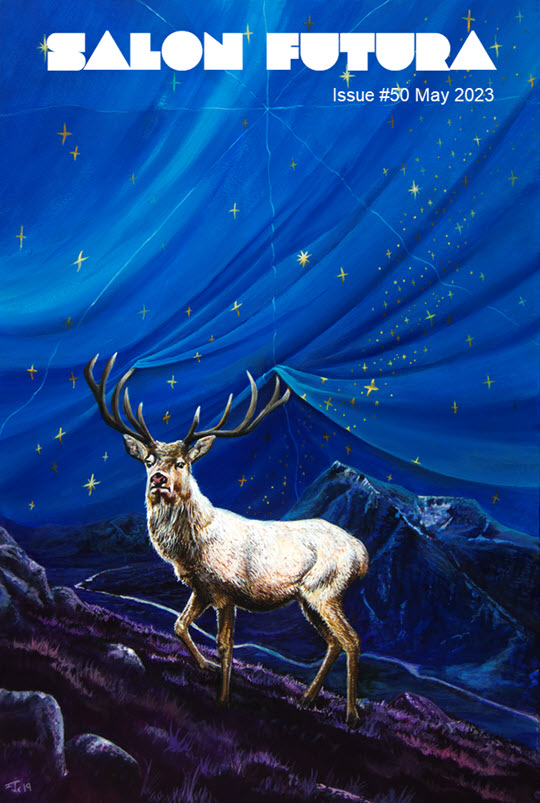 This issue’s cover is one of a series I will be running over the coming year. They are all pieces of art created by Iain J Clark for the Glasgow 2024 Worldcon. My thanks to Iain and to the Glasgow committee for giving me permission to use the art.
This issue’s cover is one of a series I will be running over the coming year. They are all pieces of art created by Iain J Clark for the Glasgow 2024 Worldcon. My thanks to Iain and to the Glasgow committee for giving me permission to use the art.

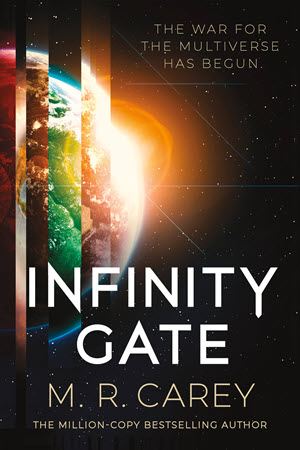 We have a new series from Mike Carey underway. Whereas the Rampart Trilogy was relatively near future, this one has strong space opera elements to it. The tag line on the cover of Infinity Gate reads, “The War for the Multiverse has Begun”. You can’t get a much bigger canvas than that.
We have a new series from Mike Carey underway. Whereas the Rampart Trilogy was relatively near future, this one has strong space opera elements to it. The tag line on the cover of Infinity Gate reads, “The War for the Multiverse has Begun”. You can’t get a much bigger canvas than that.
 The basic premise of this book by Kelly Barnhill is very simple: when women get sufficiently angry about their lot in society, they turn into dragons. Sometimes they just fly away and have fun. Sometimes they eat their annoying husbands. And if said husbands have been sufficiently unpleasant, they probably incinerate them instead. That’s entirely reasonable, right?
The basic premise of this book by Kelly Barnhill is very simple: when women get sufficiently angry about their lot in society, they turn into dragons. Sometimes they just fly away and have fun. Sometimes they eat their annoying husbands. And if said husbands have been sufficiently unpleasant, they probably incinerate them instead. That’s entirely reasonable, right?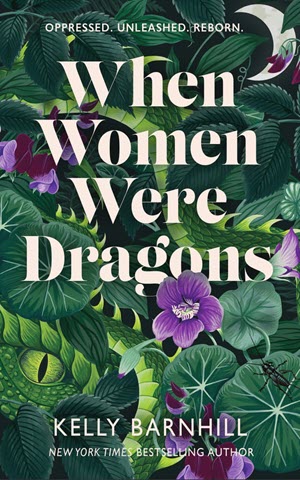
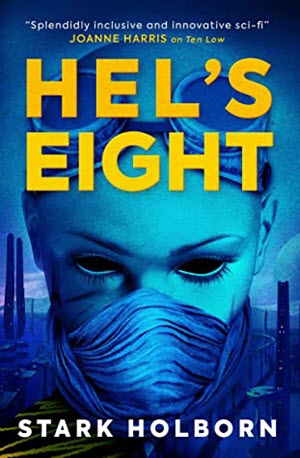 Listen up varmints, the old lady got something to tell ya.
Listen up varmints, the old lady got something to tell ya.
 The important thing to know about Annalee Newitz’s fiction is that they are, first and foremost, a science writer. Thus what you get from them is old fashioned science fiction: speculative ideas explored for their potential, and spiced up for the reader by an adventure plot. We don’t see enough of that these days, so I’m glad that Newtiz is out there making books like this.
The important thing to know about Annalee Newitz’s fiction is that they are, first and foremost, a science writer. Thus what you get from them is old fashioned science fiction: speculative ideas explored for their potential, and spiced up for the reader by an adventure plot. We don’t see enough of that these days, so I’m glad that Newtiz is out there making books like this.
 It has taken a while, but I have finally got around to watching Amazon’s adaptation of William Gibson’s The Peripheral. Those folks who insist that a TV version should never deviate in any way from the original book are doubtless furious about it, but it makes very good TV.
It has taken a while, but I have finally got around to watching Amazon’s adaptation of William Gibson’s The Peripheral. Those folks who insist that a TV version should never deviate in any way from the original book are doubtless furious about it, but it makes very good TV. Some books are more complicated to review than others. Regular readers will be well aware that The Cleaving is written by a very dear friend of mine, Juliet McKenna, many of whose books I publish. I am absolutely biased on the subject of her writing. Also I was born not far from Glastonbury, have read a lot of Arthuriana, and run a Pendragon campaign. The only reason that I haven’t written an Arthur book myself is that I’m not a good enough writer.
Some books are more complicated to review than others. Regular readers will be well aware that The Cleaving is written by a very dear friend of mine, Juliet McKenna, many of whose books I publish. I am absolutely biased on the subject of her writing. Also I was born not far from Glastonbury, have read a lot of Arthuriana, and run a Pendragon campaign. The only reason that I haven’t written an Arthur book myself is that I’m not a good enough writer.
 Reviewers often have a good laugh at the nonsense publishers put into book blurbs. As a publisher myself, I see the issue from both sides, so I know why blurbs are what they are. Even so, I still often roll my eyes and how the description in a blurb can often bear little resemblance to the actual book. On the back of Gareth L Powell’s Descendant Machine, the good folks at Titan describe it as: “a gripping, fast-paced and brilliantly imagined science fiction thrill ride.” Reader, I could not have put it better myself.
Reviewers often have a good laugh at the nonsense publishers put into book blurbs. As a publisher myself, I see the issue from both sides, so I know why blurbs are what they are. Even so, I still often roll my eyes and how the description in a blurb can often bear little resemblance to the actual book. On the back of Gareth L Powell’s Descendant Machine, the good folks at Titan describe it as: “a gripping, fast-paced and brilliantly imagined science fiction thrill ride.” Reader, I could not have put it better myself.
 This is a different sort of convention report. HistFest is a convention for fans of history books. It takes place in London, at the British Library no less, but is also available online through a streaming service. In addition to the event itself, HistFest, the organization, also offers online talks through the year, and I have presented a couple of those. Being part of the family, so to speak, I got a comped weekend pass to this year’s event.
This is a different sort of convention report. HistFest is a convention for fans of history books. It takes place in London, at the British Library no less, but is also available online through a streaming service. In addition to the event itself, HistFest, the organization, also offers online talks through the year, and I have presented a couple of those. Being part of the family, so to speak, I got a comped weekend pass to this year’s event.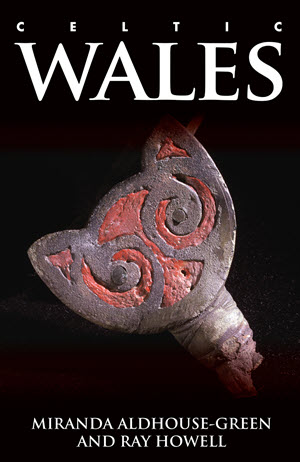 Those of you who read books about the ancient history of British Isles are probably already familiar with the name, Miranda Green. These days she is Miranda Aldhouse-Green and Professor Emerita in Archaeology at Cardiff University. Ray Howell is less well known on the popular history circuit, but he is a retired professor of Welsh Antiquity at the University of Wales. These are, in other words, two academic heavy hitters.
Those of you who read books about the ancient history of British Isles are probably already familiar with the name, Miranda Green. These days she is Miranda Aldhouse-Green and Professor Emerita in Archaeology at Cardiff University. Ray Howell is less well known on the popular history circuit, but he is a retired professor of Welsh Antiquity at the University of Wales. These are, in other words, two academic heavy hitters.
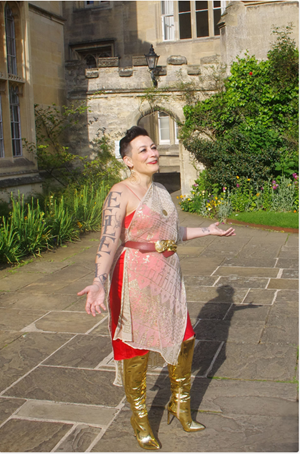 Getting to Oxford from South Wales is nowhere near as easy as it was from Wiltshire, especially as the Didcot-Oxford train line is now closed indefinitely. However, attending the annual Tolkien Lecture at Pembroke College requires an overnight stay, so I just planned to spend much of the two days travelling.
Getting to Oxford from South Wales is nowhere near as easy as it was from Wiltshire, especially as the Didcot-Oxford train line is now closed indefinitely. However, attending the annual Tolkien Lecture at Pembroke College requires an overnight stay, so I just planned to spend much of the two days travelling. There’s not a lot in the way of traditional SF&F conventions in Wales, but we do have a thriving and successful ComicCon in Swansea. It is currently housed in Swansea Arena, which also hosts pop concerts and the like. This year it overflowed into the sports hall of next-door LC2 (LC standing for Leisure Complex – LC2 also houses a swimming pool). As some people I know were exhibiting, I figured I should check it out. Roz, Jo and Chris came too.
There’s not a lot in the way of traditional SF&F conventions in Wales, but we do have a thriving and successful ComicCon in Swansea. It is currently housed in Swansea Arena, which also hosts pop concerts and the like. This year it overflowed into the sports hall of next-door LC2 (LC standing for Leisure Complex – LC2 also houses a swimming pool). As some people I know were exhibiting, I figured I should check it out. Roz, Jo and Chris came too. Given that Disney announced they would purge this series from their streaming platform, I figured I should give it a watch while I could. I’m not entirely sure it was time well spent.
Given that Disney announced they would purge this series from their streaming platform, I figured I should give it a watch while I could. I’m not entirely sure it was time well spent.
 This is the April 2023 issue of Salon Futura. Here are the contents.
This is the April 2023 issue of Salon Futura. Here are the contents. Beyond the Reach of Earth
Beyond the Reach of Earth On Savage Shores
On Savage Shores His Dark Materials – Season 3
His Dark Materials – Season 3 Eastercon 2023
Eastercon 2023 The Roamers
The Roamers The Grey King
The Grey King Picard – Season 3
Picard – Season 3 This issue’s cover is “Full Moon” by
This issue’s cover is “Full Moon” by 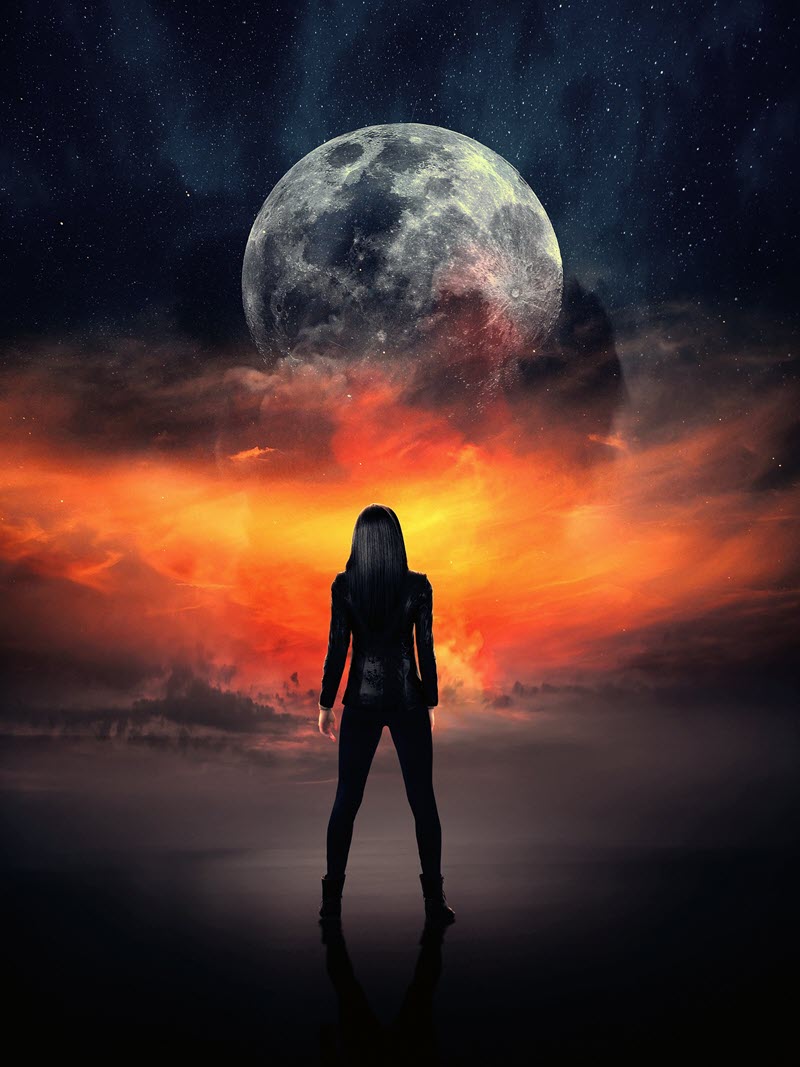
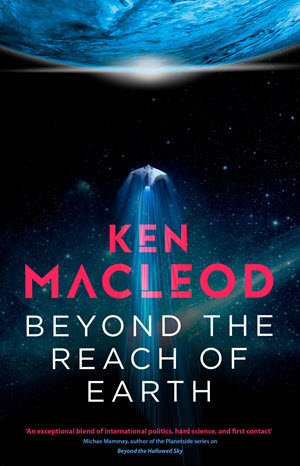 I really enjoyed Beyond the Hallowed Sky, so when the new book in the series arrived on my Kindle I dived straight in. Beyond the Reach of Earth kicks off immediately from the end of the previous book, with the existence of FTL travel having become public knowledge, not to mention the potential threat from the beings known as the Fermi. John Grant and his crew have just made themselves heroes, which is probably just as well given the likely political fallout of their having developed their own FTL ship outside of government control. Things seem liable to kick off in a big way.
I really enjoyed Beyond the Hallowed Sky, so when the new book in the series arrived on my Kindle I dived straight in. Beyond the Reach of Earth kicks off immediately from the end of the previous book, with the existence of FTL travel having become public knowledge, not to mention the potential threat from the beings known as the Fermi. John Grant and his crew have just made themselves heroes, which is probably just as well given the likely political fallout of their having developed their own FTL ship outside of government control. Things seem liable to kick off in a big way.
 Some dates remain etched in one’s mind from school history lessons. 1066 is probably the one that even history-hating British pupils remember, but close on its heels might be 1492. In that year, an ambitious Italian called Columbus set off across the Atlantic in search of a route to Asia. He bumped into the Americas along the way, and then claimed that he had discovered them. This being despite the fact that Leif Erickson and his crews got there around 500 years earlier, that Polynesian mariners had visited the west coast of the Americas before him, and that thousands of Native Americans of various types had been living there for millennia.
Some dates remain etched in one’s mind from school history lessons. 1066 is probably the one that even history-hating British pupils remember, but close on its heels might be 1492. In that year, an ambitious Italian called Columbus set off across the Atlantic in search of a route to Asia. He bumped into the Americas along the way, and then claimed that he had discovered them. This being despite the fact that Leif Erickson and his crews got there around 500 years earlier, that Polynesian mariners had visited the west coast of the Americas before him, and that thousands of Native Americans of various types had been living there for millennia.
 And that’s a wrap. The BBC has reached the last episode of the final volume of His Dark Materials. Well, they did so a while back, but I have finally watched them all. What are we to make of it?
And that’s a wrap. The BBC has reached the last episode of the final volume of His Dark Materials. Well, they did so a while back, but I have finally watched them all. What are we to make of it? It was the best of times, it was the worst of times. Rarely has Charles Dickens so perfectly summed up a convention.
It was the best of times, it was the worst of times. Rarely has Charles Dickens so perfectly summed up a convention. The Roamers is the latest novel by Italian author, publisher and all-round promotor of bookish stuff, Francesco Verso. Without giving too much away, it tells of a group of counter-culture people in Rome who end up evolving into a new type of human much better suited to living in harmony with nature. To that extent, it is a very hopeful novel. More of that later, but first the book.
The Roamers is the latest novel by Italian author, publisher and all-round promotor of bookish stuff, Francesco Verso. Without giving too much away, it tells of a group of counter-culture people in Rome who end up evolving into a new type of human much better suited to living in harmony with nature. To that extent, it is a very hopeful novel. More of that later, but first the book.
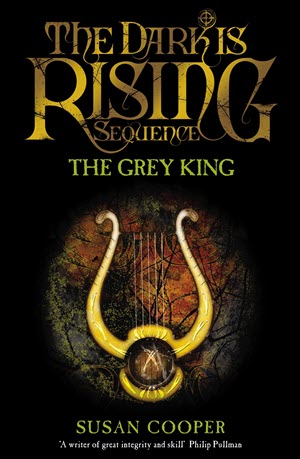 Book four in Susan Cooper’s The Dark is Rising sequence focuses once more on Will Stanton. It is set in North Wales and the Grey King of the title is a malevolent spirit who inhabits Cader Idris. In Welsh legend the mountain is home to Gwyn ap Nudd and his hunting dogs, the Cŵn Annwn (the latter of whom also feature in Juliet McKenana’s The Green Man’s Gift). Will ends up staying on an hilltop farm, and a theme throughout the book is of sheep being attacked by dogs.
Book four in Susan Cooper’s The Dark is Rising sequence focuses once more on Will Stanton. It is set in North Wales and the Grey King of the title is a malevolent spirit who inhabits Cader Idris. In Welsh legend the mountain is home to Gwyn ap Nudd and his hunting dogs, the Cŵn Annwn (the latter of whom also feature in Juliet McKenana’s The Green Man’s Gift). Will ends up staying on an hilltop farm, and a theme throughout the book is of sheep being attacked by dogs.
 There are times when a piece of art can be utterly ridiculous, and yet so beautifully executed that it deserves heaps of praise. That is certainly true of season #3 of Picard. To say that it provides fan service is to massively understate the obvious. It is to fan service what the great pyramid of Khufu is to a balsawood coffin; or what Trantor is to a village of mud huts. It is fan service dialed up so far to the max that mathematicians are arguing over which size of infinity is required to put a number to it.
There are times when a piece of art can be utterly ridiculous, and yet so beautifully executed that it deserves heaps of praise. That is certainly true of season #3 of Picard. To say that it provides fan service is to massively understate the obvious. It is to fan service what the great pyramid of Khufu is to a balsawood coffin; or what Trantor is to a village of mud huts. It is fan service dialed up so far to the max that mathematicians are arguing over which size of infinity is required to put a number to it.
 This is the March 2023 issue of Salon Futura. Here are the contents.
This is the March 2023 issue of Salon Futura. Here are the contents. Space Crone
Space Crone The Mimicking of Known Successes
The Mimicking of Known Successes Meru
Meru Rhapsody of Blood: Revelations
Rhapsody of Blood: Revelations Everything, Everywhere, All at Once
Everything, Everywhere, All at Once Venus & Aphrodite
Venus & Aphrodite Greenwitch
Greenwitch This issue’s cover is Golden Angel by Stefan Kellar from Pixabay. More information is available
This issue’s cover is Golden Angel by Stefan Kellar from Pixabay. More information is available 
 Here’s a book that I absolutely could not resist. Space Crone is a collection of writings on feminism and gender by none other than Ursula K Le Guin. See what I mean? It has “buy me” written all over it. There’s a lot, obviously. I’m going to feature some of my favourite pieces.
Here’s a book that I absolutely could not resist. Space Crone is a collection of writings on feminism and gender by none other than Ursula K Le Guin. See what I mean? It has “buy me” written all over it. There’s a lot, obviously. I’m going to feature some of my favourite pieces.
 A good novella can be read and enjoyed in a single sitting. That’s certainly true of this new book by Malka Older. But just because a book is short it doesn’t mean that it can’t have depth. Nicola Griffith did amazing thing with the plot in Spear. Older has done something different but equally impressive with The Mimicking of Known Successes.
A good novella can be read and enjoyed in a single sitting. That’s certainly true of this new book by Malka Older. But just because a book is short it doesn’t mean that it can’t have depth. Nicola Griffith did amazing thing with the plot in Spear. Older has done something different but equally impressive with The Mimicking of Known Successes.
 I’ve heard a lot of good things about Machinehood, but haven’t got around to reading it, so when I saw a new SB Divya novel available I figured I should dive in straight away. I’m pleased I did, because Meru has given me a lot to think about.
I’ve heard a lot of good things about Machinehood, but haven’t got around to reading it, so when I saw a new SB Divya novel available I figured I should dive in straight away. I’m pleased I did, because Meru has given me a lot to think about.